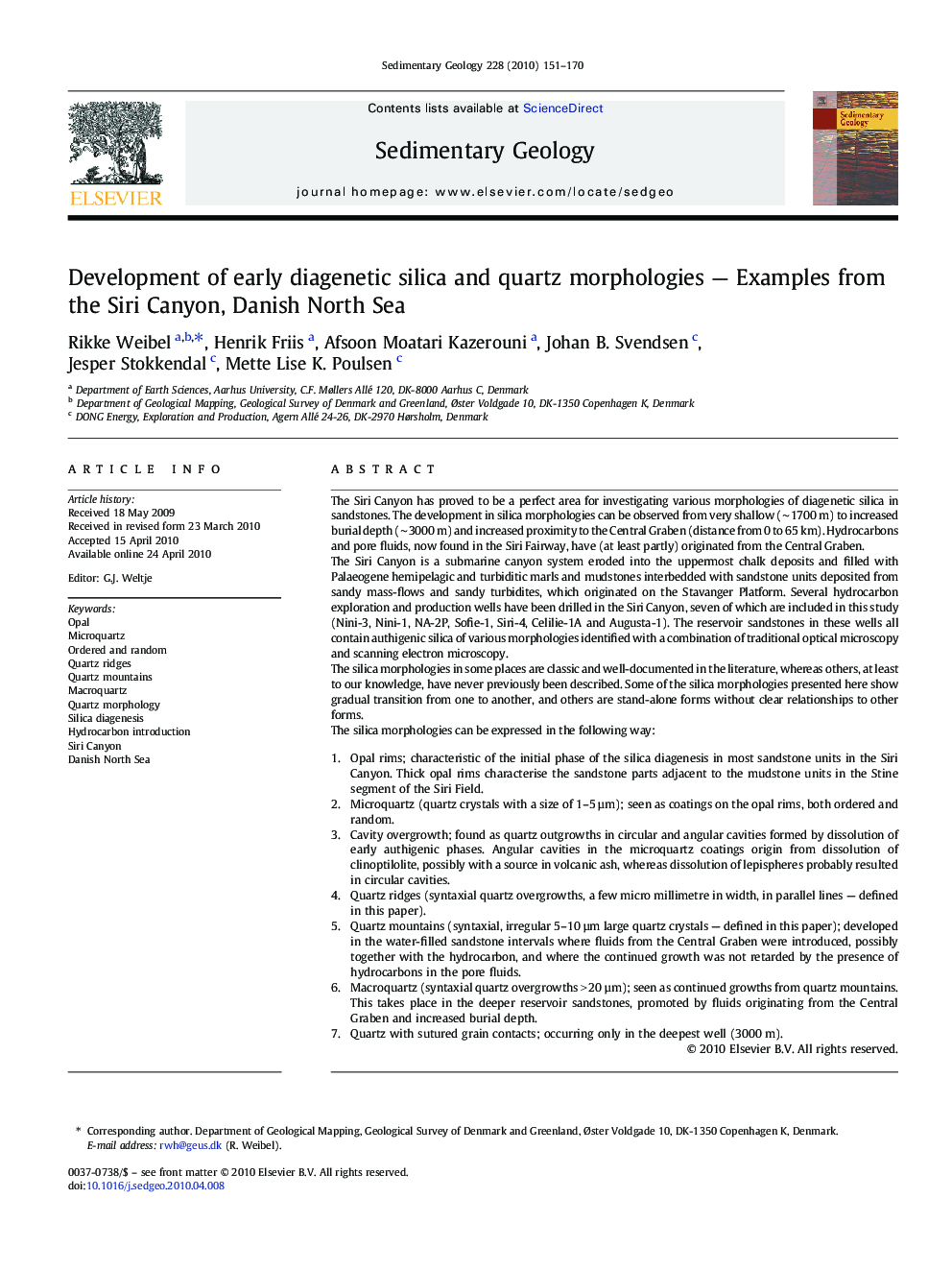| Article ID | Journal | Published Year | Pages | File Type |
|---|---|---|---|---|
| 4690203 | Sedimentary Geology | 2010 | 20 Pages |
The Siri Canyon has proved to be a perfect area for investigating various morphologies of diagenetic silica in sandstones. The development in silica morphologies can be observed from very shallow (∼ 1700 m) to increased burial depth (∼ 3000 m) and increased proximity to the Central Graben (distance from 0 to 65 km). Hydrocarbons and pore fluids, now found in the Siri Fairway, have (at least partly) originated from the Central Graben.The Siri Canyon is a submarine canyon system eroded into the uppermost chalk deposits and filled with Palaeogene hemipelagic and turbiditic marls and mudstones interbedded with sandstone units deposited from sandy mass-flows and sandy turbidites, which originated on the Stavanger Platform. Several hydrocarbon exploration and production wells have been drilled in the Siri Canyon, seven of which are included in this study (Nini-3, Nini-1, NA-2P, Sofie-1, Siri-4, Celilie-1A and Augusta-1). The reservoir sandstones in these wells all contain authigenic silica of various morphologies identified with a combination of traditional optical microscopy and scanning electron microscopy.The silica morphologies in some places are classic and well-documented in the literature, whereas others, at least to our knowledge, have never previously been described. Some of the silica morphologies presented here show gradual transition from one to another, and others are stand-alone forms without clear relationships to other forms.The silica morphologies can be expressed in the following way:1.Opal rims; characteristic of the initial phase of the silica diagenesis in most sandstone units in the Siri Canyon. Thick opal rims characterise the sandstone parts adjacent to the mudstone units in the Stine segment of the Siri Field.2.Microquartz (quartz crystals with a size of 1–5 µm); seen as coatings on the opal rims, both ordered and random.3.Cavity overgrowth; found as quartz outgrowths in circular and angular cavities formed by dissolution of early authigenic phases. Angular cavities in the microquartz coatings origin from dissolution of clinoptilolite, possibly with a source in volcanic ash, whereas dissolution of lepispheres probably resulted in circular cavities.4.Quartz ridges (syntaxial quartz overgrowths, a few micro millimetre in width, in parallel lines — defined in this paper).5.Quartz mountains (syntaxial, irregular 5–10 µm large quartz crystals — defined in this paper); developed in the water-filled sandstone intervals where fluids from the Central Graben were introduced, possibly together with the hydrocarbon, and where the continued growth was not retarded by the presence of hydrocarbons in the pore fluids.6.Macroquartz (syntaxial quartz overgrowths > 20 µm); seen as continued growths from quartz mountains. This takes place in the deeper reservoir sandstones, promoted by fluids originating from the Central Graben and increased burial depth.7.Quartz with sutured grain contacts; occurring only in the deepest well (3000 m).
